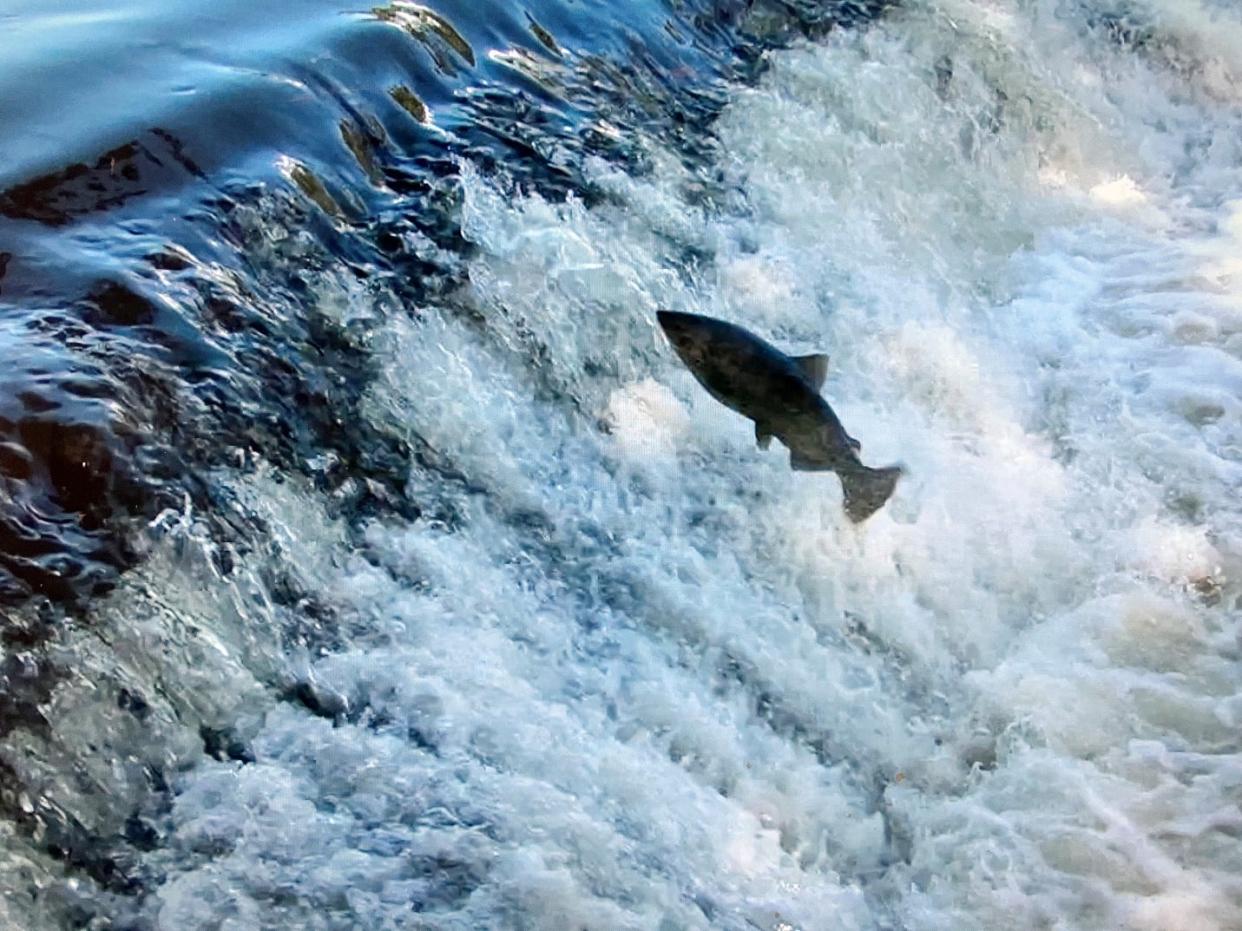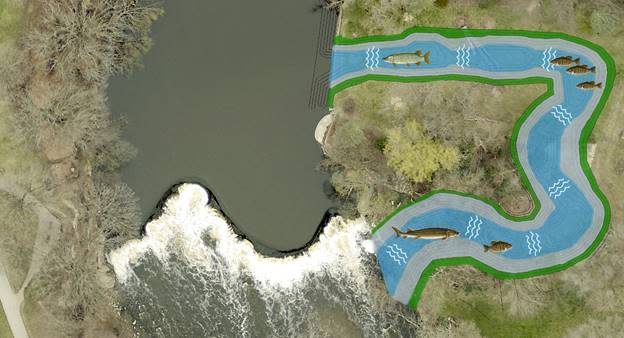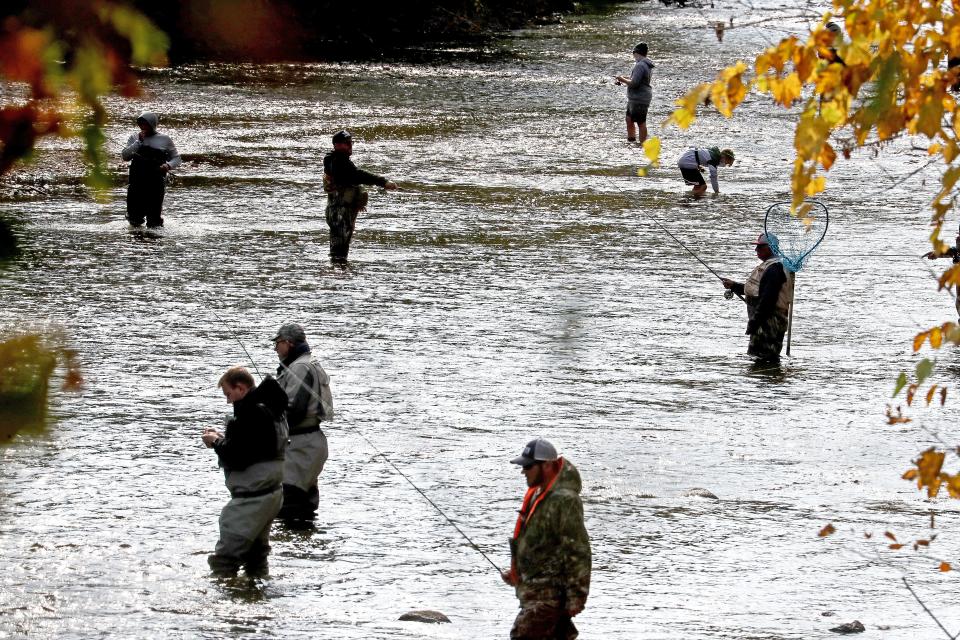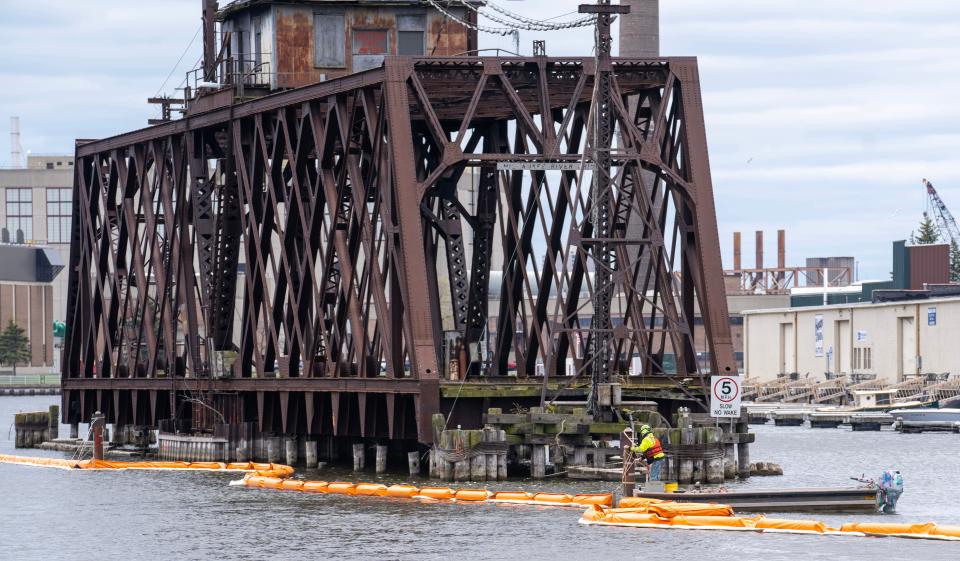A new fish passage around Kletzsch Dam will help restore Milwaukee's waterways. Here's how.

For decades, the Kletzsch Dam in Glendale has prevented prized fish, like salmon, lake sturgeon, northern pike and smallmouth bass, to swim upstream. But a new fish passage has opened up 54 miles of waterway for fish to spawn and reproduce.
The fish passage is among a suite of projects to clean up and restore the Milwaukee River Estuary, where the Milwaukee, Menomonee and Kinnickinnic rivers meet before heading into Lake Michigan. The estuary is designated as an "area of concern" − one of the most degraded areas in the Great Lakes region still troubled by legacy pollution. It includes about 12 total miles of waterway of the lower reaches of Milwaukee's three rivers and nearshore areas along Lake Michigan.
One priority is to better connect rivers and streams so that fish and other aquatic species can swim upriver to find food, reproduce and establish populations.
The project was led by the Milwaukee Metropolitan Sewerage District, which partnered with Wisconsin Department of Natural Resources and Milwaukee County Parks. Its one of many to improve passage and connectivity.
Another passage is slated for Estabrook Falls in Shorewood, which blocks passage during parts of the migration seasons. The sewerage district is also looking into options to improve fish passage near the former North Avenue Dam, just below North Ave. on the Milwaukee River, where concrete still partially blocks the river channel.

Area of concern program is a commitment to clean up Great Lakes
The U.S. and Canada signed the Great Lakes Water Quality Agreement in 1972 to address more than a century of unbridled pollution from industry and farm runoff. The agreement, which set the path to restore and protect the lakes and waterways that feed them, was updated in 1987 to identify 43 areas of concern throughout the basin in both countries.
The Great Lakes Restoration Initiative, which launched in 2010, helped speed the restoration of these sites, providing more than $700 million to fund cleanup efforts. Last year, the bipartisan infrastructure law from the federal government gave a billion-dollar boost to the program to speed up the restoration of 22 of the remaining 25 areas of concern in the U.S. by 2030.
More: EPA Administrator, Tammy Baldwin celebrate funding to clean degraded Milwaukee's waterways
Areas of concern are defined by "beneficial use impairments," or symptoms of pollution. The Milwaukee site has 11 of these symptoms largely due to sediments contaminated with PCBs, or polychlorinated biphenyls. While PCBs were banned by the federal government in 1979, they've stuck around in riverbeds. PCBs are toxic at low levels and can build up in fish and animals higher up in the food web in a process known as bioaccumulation.
The U.S. Environmental Protection Agency and other state and federal agencies are tasked with cleaning up the areas of concern. The EPA will delist a site when monitoring efforts show that all of the restoration targets are met.
To date, six sites have been cleaned up and are now delisted on the U.S. side of the basin, including Wisconsin’s Lower Menominee River, which was delisted in 2020.

Removing sediment, other projects help the rivers rebound
PCBs can't be treated, the sediment can only be physically removed and then stored permanently in a facility. Efforts to remove contamination from the stretches of the river in the area of concern started earlier this year in the Third Ward. The sewerage district is currently designing and constructing a new facility to accommodate the PCB-contaminated sediment.

The EPA estimates that Milwaukee's area of concern will be delisted by 2030.
Milwaukee's area of concern is one of four in Wisconsin. Two other sites flow into Lake Michigan: the Lower Green Bay and Fox River, and the Sheboygan River. Projects near the St. Louis River, which flows into Lake Superior and is shared by Minnesota and Wisconsin, are successfully cleaning up contamination and restoring habitats, like culturally significant wild rice beds.
You can learn more about projects related to the area of concern on the Water Restoration Partnership's site.
Caitlin Looby is a Report for America corps member who writes about the environment and the Great Lakes. Reach her at clooby@gannett.com or follow her on X @caitlooby.
This article originally appeared on Milwaukee Journal Sentinel: Kletzsch Dam fish passage project complete, opens waterway for fish

